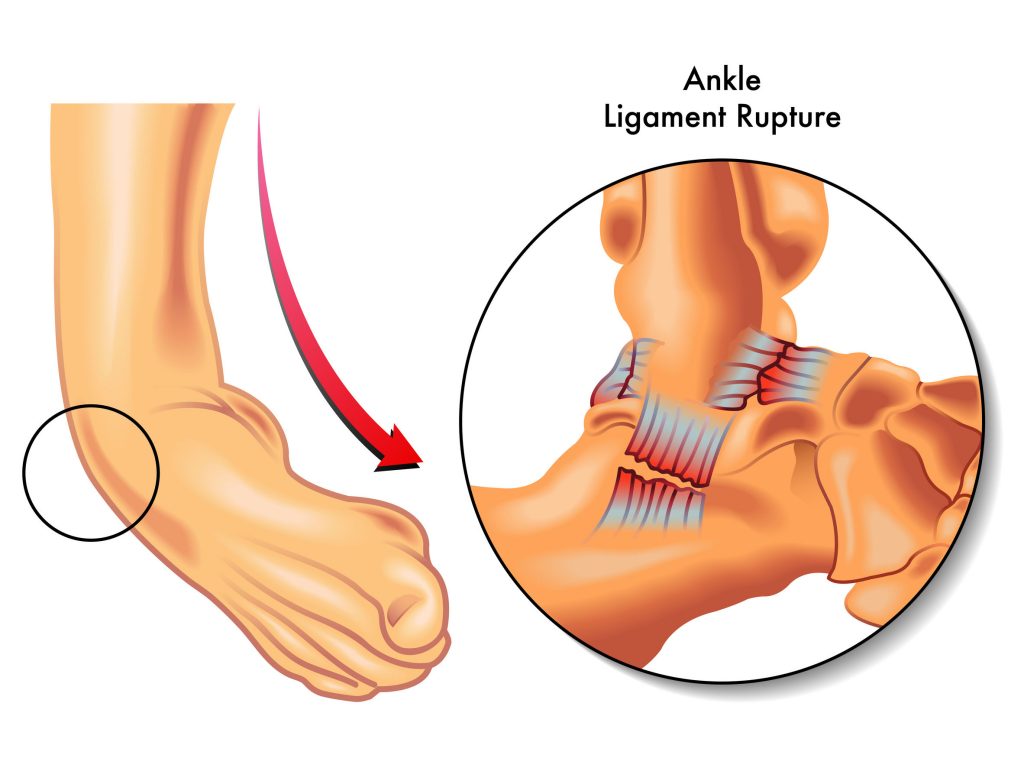Ankle sprains are prevalent injuries during sports, recreational activities, or even when trudging on uneven ground. This type of injury happens when the tendons that support the ankle stretch or rip because the foot turns or rolls too much. Recovering from an ankle injuries often requires proper management and rehabilitation, where physiotherapy plays a pivotal role. This article explores how physiotherapy can facilitate optimal recovery from an ankle sprain, helping individuals regain strength, mobility, and confidence in their movements.
Understanding Ankle Sprains
An ankle sprain can vary in harshness and is classified into three grades:
- Grade I: Mild sprain with slight stretching and microscopic ligament tearing. Symptoms may include mild pain and swelling, with little to no loss of function.
- Grade II: Moderate strain involving partial tearing of the ligament. This grade often results in moderate pain, swelling, bruising, and difficulty bearing weight.
- Grade III: Severe sprain where the ligament is completely torn. This can cause significant swelling, severe pain, instability, and inability to put weight on the affected ankle.
Prompt and effective treatment is essential to ensure a full recovery and to prevent long-term complications such as chronic pain, instability, or recurrent sprains.
The Role of Physiotherapy in Recovery
Physiotherapy provides a structured look at recovery, focusing on restoring function, alleviating pain, and preventing future injuries. Here’s a breakdown of how physiotherapy can assist in the recovery process:
Initial Assessment and Diagnosis
Upon your first visit, a physiotherapist will thoroughly assess your ankle. This includes evaluating the joint’s range of motion, strength, and stability. They will also review your medical history and the circumstances surrounding your injured ankle. This initial Review is crucial for creating a treatment plan that is unique to you and fits your needs.
Pain Management Techniques
Physiotherapists employ varied techniques to manage pain and inflammation during the acute phase of recovery. These may include:
- Cold Therapy: Applying ice packs reduces swelling and numbness in the initial days after the injury.
- Electrical Stimulation: Using modalities such as TENS (Transcutaneous Electrical Nerve Stimulation) to relieve pain and promote healing.
- Manual Therapy: Hands-on techniques that help improve circulation, reduce swelling, and ease pain in the affected area.
Restoring Mobility
Restoring the range of motion is a critical component of rehabilitation. The physiotherapist will guide you through gentle mobility and stretching techniques to help the body heal and stop Being stiff in the ankle joint. Depending on the severity of the sprain, these exercises typically begin within a few days of the injury.
Strengthening Exercises
As you progress, strengthening exercises become a focal point of the rehabilitation program. Weakness in the muscle areas around the ankle can contribute to Unstable and increase the risk of future sprains. Your physiotherapist will design a tailored strengthening regimen that may include:
- Resistance Band Exercises: These help target specific muscle groups that support the ankle.
- Weight-Bearing Exercises: Gradually introduce weight-bearing activities as your strength improves.
- Functional Exercises: Activities that mimic everyday tasks or sports-specific movements to prepare your ankle for return to normal activities.
Balance and Proprioception Training
Balance and proprioception are crucial for ankle pain stability and injury prevention. Proprioception refers to the body’s ability to sense its position in space. Your physiotherapist may incorporate balance training using the following:
- Balance Boards: These tools challenge your stability and enhance coordination.
- Single-Leg Stands: Simple exercises that improve your balance on one leg, mimicking real-life scenarios.
- Dynamic Movements: Activities that require quick changes in direction or jumping to simulate the demands of sports and daily life.
Education and Injury Prevention
An essential aspect of physiotherapy is educating patients about their injuries and how to prevent future occurrences. This includes discussing proper footwear, techniques for warming up and cooling down, and exercises that can be performed at home to maintain strength and flexibility. Understanding the biomechanics of your movement can help you make intelligent choices and lower your risk of re-injury.
Gradual Return to Activity
Finally, your physiotherapist will develop a safe and gradual return-to-activity plan, allowing you to transition back to sports or daily routines. This step-by-step approach ensures that your injured foot is adequately prepared for the demands of your activities, reducing the likelihood of re-injury.
Conclusion
Physiotherapy is integral to ankle sprain recovery, offering a comprehensive approach that encompasses pain management, mobility restoration, strength building, and injury pain prevention. By working with a qualified physiotherapist, Those involved can optimize their recovery, regain confidence in their movements, and reduce the risk of future sprains. If you’ve suffered an ankle sprain, consider seeking professional physiotherapy to guide you through recovery and help you return to your favorite activities more vital than ever.

